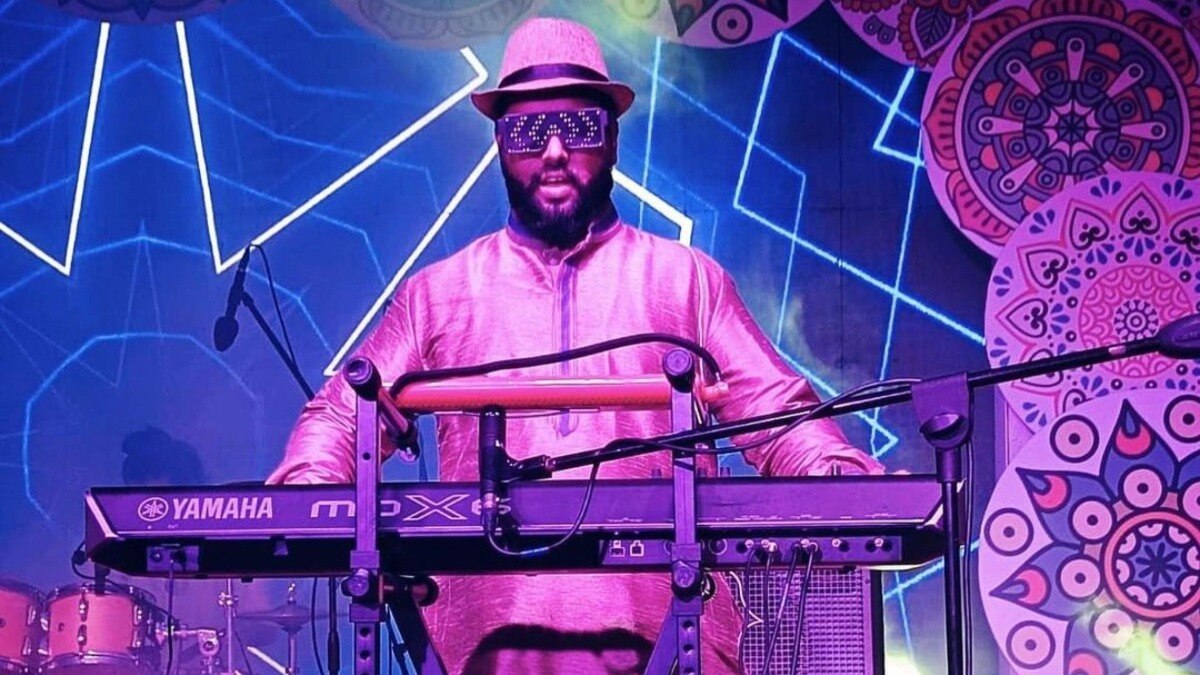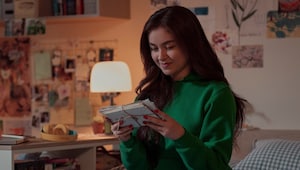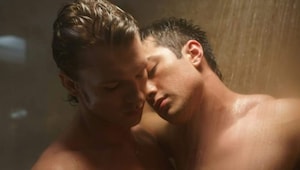The story of Rahul Gajjal, a visually-impaired artist, and his remarkable vision of making music
The music maestro speaks to Cosmopolitan India about the one constant in his life, that's given him an identity, purpose, and a sense of belonging.

To quote the music legend Stevie Wonder, “Just because a man lacks the use of his eyes doesn't mean he lacks vision,” which aptly describes how Rahul Gajjal lives his life and composes his music. To see what music means to the 26-year-old visually impaired artist, one only need look at the words ‘Music is Soul’ written above his Kawai piano at his home. Despite his inability to see, Gajjal has been striking the right note ever since he lost his eyesight as a kid.
Right from playing the kitchen utensils as a child and trying a grand piano for the very first time, to preparing for competitive music exams, training Ayushmann Khurrana for Andhadhun, and now dropping his debut album as an independent musician, every single aspect of Gajjal’s life has been a shining example of all that a man with a vision can achieve.
Picking things up (literally) as a child
Growing up and not being able to play outside as a kid was what led Gajjal to the world of music. “My mother was trying to figure out how I will pass time when other kids played outside. She used to put on some music and see how I would react. I would pick up the containers and utensils lying around and play. I used to pick up anything. That’s when she realised that I have a taste for music,” says Gajjal. A ’90s kid, he shares a heartfelt story about a movie and its music that will always be special. “My favourite movie was Kaho Na Pyaar Hai. It was one of the few movies that I remember seeing before I lost my eyesight. I was a huge fan of Hrithik Roshan and used to dance to his songs all day,” says Gajjal, who currently enjoys listening to his favourite artist who goes by the name of Lizzy McAlpine.
It was this fascination for all things music that led to Gajjal receiving a toy piano as a gift from his aunt. “Those things have songs installed in them, say for example ‘Jingle Bell’ and other nursery rhymes. I started copying the tunes and playing it by myself, without even knowing the seven notes of music. My parents realised that I must have something special in me to play the song without any formal learning. That’s when they put me in a class,” he adds. Gajjal, like any other youngster growing up, was excited because he’d cracked something that very few people in his position have been able to do. Today, the piano and keyboard are just two of the many instruments that he can play. He can jam on the kalimba (a native African instrument), a morchang (percussion instrument in folk music), a guitar, keytar, melodica, and aerophone as well. One might think that it’s all in the mind when it comes to memory, but Gajjal thinks through his fingers. “You should be able to repeat without knowing. When you’re doing something impromptu, you are thinking through your fingers. It’s seamless. And that’s the level you want to achieve as a musician.”
The helping hands along the way
Gajjal didn’t just learn about what he likes about music, but what he finds better as well. “I first began learning the harmonium when I was nine. Three or four years later, I realised that keyboard is the big game. As the harmonium is played by one hand, I had to improve my left hand for the keyboard. But the good thing is that I had developed a good ear for music by then.” His love for music continued at the Happy Home and School for the Blind in Worli, Mumbai as he developed a lasting bond with his teacher, Nitesh, whom he plays with even today. “Because he (Nitesh) was visually-impaired as well, he taught me how not to rely on sheet music and reading. You develop your ear so much that if someone plays something, you can play it back. Barring that, there weren’t any difficulties as I knew how to play the harmonium. Having learnt that in a group class with people who could see saw me stand out and give me the confidence.”
First times are always special
And that confidence translated into a first-time experience that Gajjal will never forget—the moment where he played the grand piano for the very first time. “Nitesh was teaching me the keyboard but I couldn’t imagine playing on a piano since I hadn’t touched one. I was in the ninth standard and was selected to perform at a concert conducted by the Mehli Mehta Music Foundation. A teacher from Canada gave me the chance to play two songs—a German song and an English lullaby. My initial reaction was realising how heavy the keys are. In the piano, you have to apply a specific pressure, and develop a posture and technique while playing. It was during the rehearsals that I realised there are pedals as well. She peddled for me since I didn’t know how to,” says Gajjal with a huge smile on his face before he talks about how his first grand-piano performance was one that made him feel included.
“Since it was a choir performing, you also have to look at the conductor. There will some parts that are soft or a crescendo where you have to see their action. But how could I do that. She (the teacher) sat diagonally on the bench so that she could reach the pedal and tapped the conductor’s signals on my shoulder—tap harder if things had to be louder.”
Things only had to get better and they did as he prepared for the Trinity School of London graded music exams that were followed by a four-year stint at the Furtados School of Music (FSM) when he was at St Xavier’s College. Under two extremely dedicated teachers named Schenelle and Crystal, Gajjal was able to attempt four grade exams and received the Western Classical music training that he needed to hone his skills. There was no way he was going to feel the nerves as his performances earlier had made him more confident.
Preparing Ayushmann Khurrana for Andhadhun
Countless movies over the years have seen characters who are visually impaired, few of them musicians and only a single blind pianist that comes to mind—the 2018 black comedy Andhadhun. Gajjal played more than an instrumental role in Ayushmann Khurrana’s performance training the actor for his role as the protagonist. Showbiz surely doesn’t get any bigger and better than this for him. “The team of the film reached out to the National Association for the Blind as they wanted to speak to people for inspiration. One of the people working there got in touch with me. Khurrana needed someone to jam with and learn about their life as a visually impaired artist. The office had a baby grand piano where he was learning. I wasn’t told that he is in the room. They just wanted me to be natural and see how I sit on the piano, adjust the bench, find the middle C (the center of the piano), where does my face turn when I am playing, how do I walk, dress, go on a date, react to a joke, etc,” says Gajjal who talks about how easy the process was. “Him being a good singer and musician made things easy.” As far as songs of the film go, it’s the piano piece on which ‘Woh Ladki’ is made that Gajjal loves most.
It wasn’t just conversations with the actor, but director Sriram Raghavan that stood out as well. “He wanted to ensure that nothing seems unrealistic. He asked me to narrate the most absurd thing that’s happened in my life. I told him that no matter how well dressed you are, a blind man will always be offered money. That’s happened with me, and so many people who are visually impaired. The exact same thing happened in a scene where Khurrana sits at a rickshaw stand in Pune and there’s a lady who gives him money. This was completely spontaneous reaction from the lady that got captured.”
Challenges and the music industry being more inclusive towards the visually-challenged
If being an independent artist is hard, being a visually-impaired musician is much more challenging. Even more so in India that’s yet to be as inclusive for the disabled community, compared to other countries. As far as music is concerned, getting to read Western Classical sheet music in Braille is something that is still not available in the country. “The challenge is the printing. Music in Braille is a different ball game. You require a code to put into the machine, so that it identifies the sheet music and converts it into Braille. It’ll take just one person to take initiative and get things going.” While he hopes that visually-experienced musicians will get to read sheet music one day, he doesn’t want special treatment as far as instruments are concerned. “These are universal instruments. I don’t want things to be customised or made specifically for me or us. Remember, all this time, we’re trying to fit in from a young age.”
As far as getting gigs are concerned, Gajjal says that a lot of problems will be solved just by talking to the artists. “We have to offer more than what is being offered in the market. Because the general understanding amongst those who give us gigs is how will we do it. They will have to provide more than just money—getting me to the stage, commute, etc. When I get approached, out of 10, 2 will understand how I function to give me the chance. People might think about those things. Instead of imagining, just ask me. And we can discuss the way forward,” says Gajjal who was involved in the background score for OTT films—Jaadugar, Tarla Dalal, and Saas Bahu Achaar.
The daily grind and what’s next
One might think that he’s a full-time musician, but music is just one part of Gajjal’s life. He’s also a content writer with ZEE5 whose job involves him writing meta deta and the synopsis of the offerings on the streaming platform. He’s also an adventure sport junkie and has recently gone paragliding. He could also have been a member of the Indian blind football team had things gone well. The man might not have the sight, but he sure has the vision to go full steam ahead.
On the day of the interview, Gajjal took an evening flight to New Zealand for a five-day tour in Auckland and Queenstown with singer and songwriter, Siddharth Slathia. Post that, he’ll be jamming in the UK as he pursues Human Resource Management at Aston University, Birmingham. All that he wants to do is put out his own music. That dream too is soon to be a reality as he will be dropping his debut album called Come Alive that will feature a host of instrumental songs.
Last, but certainly not the least, Gajjal has never forgotten where he comes from. And he’s just doing his bit. It was Gajjal, back in the day, who persevered and overcame obstacles. Today there are so many visually-impaired Rahuls in the city and in India who are taking their very first steps into the world of music. “If you face challenges as a kid, due to Braille not being available or anything, don’t give up. There are workarounds possible in anything. My story has been a combination of them, and I will have to find them and that’s my responsibility, and not other people’s. Thankfully, there are many apps and softwares available that makes producing music easier for the visually impaired. “I like giving back and that will always continue. I try and share my experiences with them. My job to ensure they aren’t bogged down. It takes an extra effort to keep at it. Not everyone can do that. I want to be that cushion that they need to fall back down.”
Lead image: rahulgajjal | Instagram
Also read: Five female independent artists on balancing creative freedom with financial challenges
Also read: How does the music you listen to affects your well-being
more from Life

Why going offline is suddenly Gen Z’s favourite flex

Four celeb-inspired salad recipes are what January lunches should be made of

If you’re celebrating this season, you’ll want to do it at Shangri-La Eros New Delhi

What does it mean to be queer after 'Heated Rivalry' ended?

Scents that make staying in feel like a winter wonderland

'Bridgerton' season 4 trailer: Benedict and Sophie are ready to serve a Cinderella-esque romance

It's the Year of the Horse and here's what it means for you

If a man wears this, date him….

Vanishing acts or forever energy? Here’s how you can enter the new year with a happy heart

This year’s beauty trends, written all over our faces
